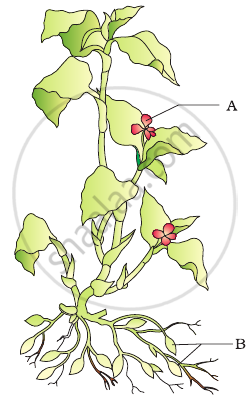Advertisements
Advertisements
प्रश्न
Name the part of Bryophyllum where the buds are produced for vegetative propagation.
उत्तर
Leaves produce buds for vegetative propagation in Bryophyllum.
APPEARS IN
संबंधित प्रश्न
Describe reproduction by spores in Rhizopus
What is name of the organ of propagation present in a tuber?
Asexual reproduction through budding takes place in :
(i) Amoeba and Yeast
(ii) Yeast and Hydra
(iii) Hydra and Plasmodium
(iv) Corals and Sponges
(a) (i) and (ii)
(b) only (ii)
(c) (i) and (iii)
(d) (ii) and (iv)
A tiny animal having tentacles which reproduces by growing buds on the sides of its body is :
(a) Planaria
(b) Yeast
(c) Amoeba
(d) Hydra
A worm X found in freshwater and slow-moving streams has been accidently cut into three pieces. It was observed that in due course of time, each cut piece of the worm develops to become a complete worm by growing all the missing parts.
(a) Name the worm X which can exhibit this phenomenon of making complete worm from its cut body parts.
(b) Name another organism Y which possesses the same characteristic of growing fully from its cut body parts.
(c) What is the name of this process in which a complete organism is formed from its cut body part.
(d) State whether X and Y are unicellular and/or multicellular organisms.
(e) Can a dog be produced completely form its cut body part (say, a cut tail) just like organisms X and Y? Why?
How is plant hybridisation as a technique beneficial?
The ability of an organism to develop a whole body from a broken piece or fragment is called ______
Which of the following statements is/are true for sexual reproduction in plants?
(i) Plants are obtained from seeds.
(ii) Two plants are always essential.
(iii) Fertilisation can occur only after pollination.
(iv) Only insects are agents of pollination.
Choose from the options given below.
In the figure given below the plant bears two different types of flowers marked ‘A’ and ‘B’. Identify the types of flowers and state the type of pollination that will occur in them.

Match the columns:
| Column A (Asexual) | Column B (Examples) | ||
| (a) | Spore formation | (1) | Spirogyra |
| (b) | Conidia formation | (2) | Yeast |
| (c) | Fragmentation | (3) | Chlamydomonas |
| (d) | Budding | (4) | Penicillium |
